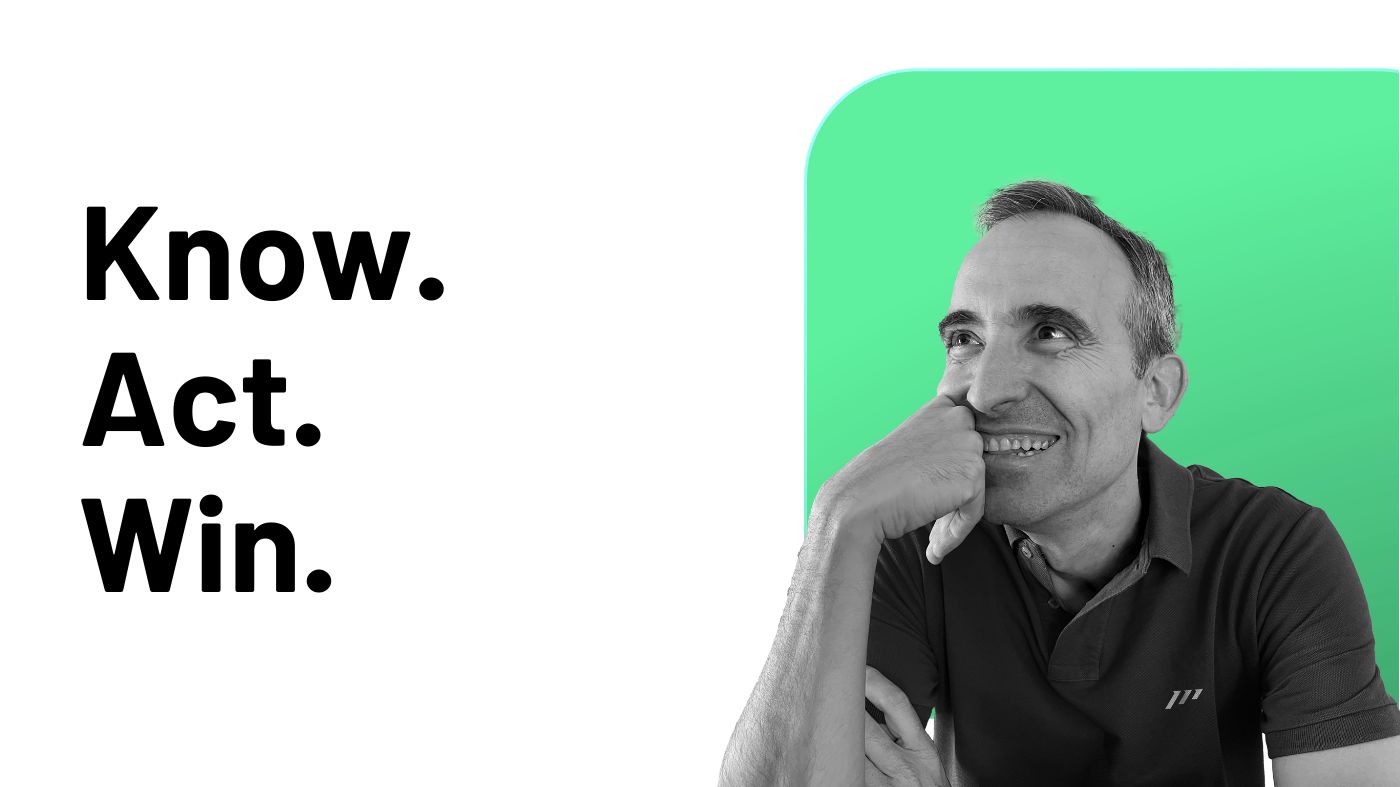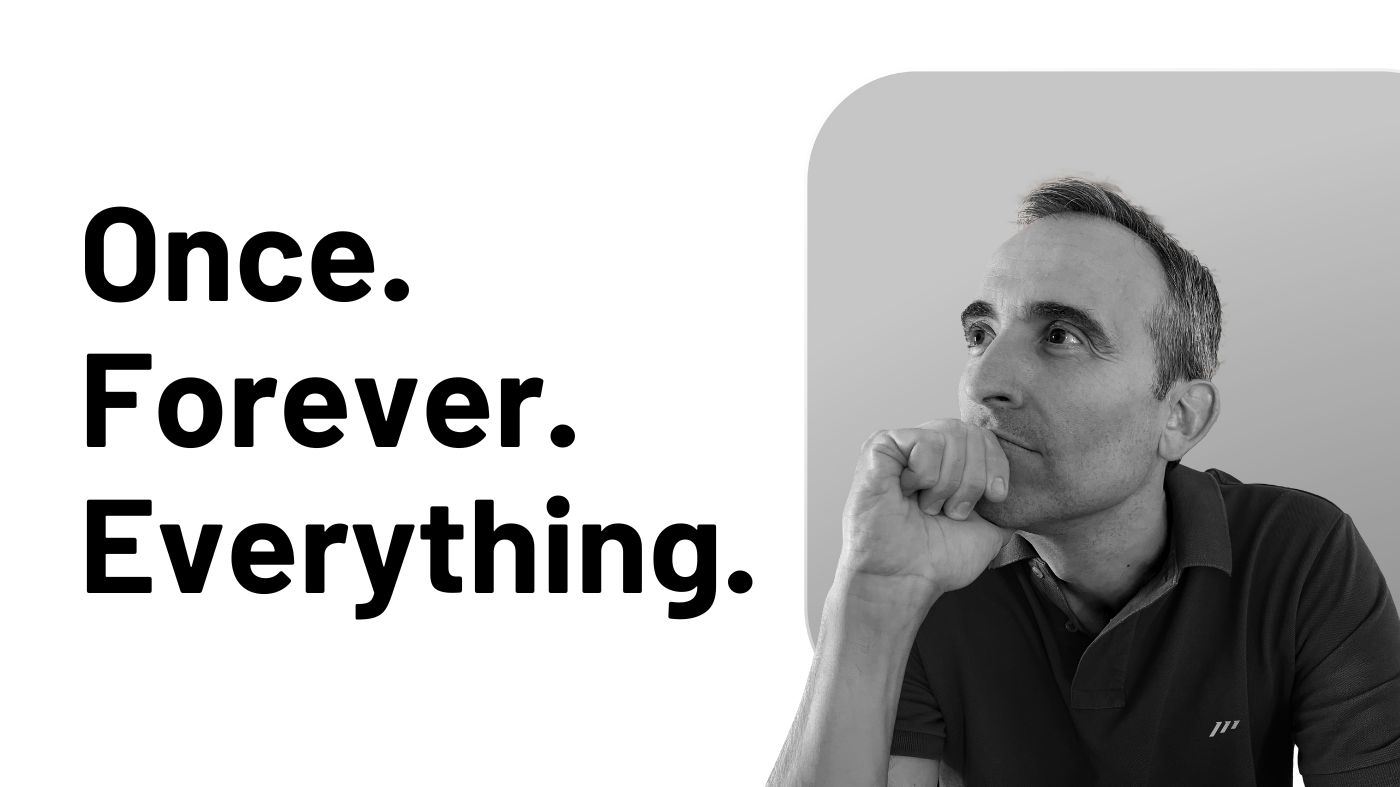Information without action changes nothing.
Every day you are surrounded by it.
Reports land in your inbox. Market updates flash on your screen. Competitors make moves. Customers share feedback. Opportunities appear… then vanish.
We were told that having this much information would make us unstoppable.
Better decisions. Faster results. Clear competitive advantages.
But for most busy professionals, it has done the opposite.
The volume is crushing.
You start the day with a clear plan, yet by noon you are chasing an endless trail of links, files, and messages. Somewhere in that mess lies the one insight that could have shifted your quarter, but by the time you find it, the moment has passed.
I have been there.
Running multiple companies. Managing high-stakes projects. Juggling priorities that all felt urgent.
The frustration was not just about time lost, it was about watching opportunities slip away because the bridge between knowing and doing did not exist.
That bridge is what we, at the Paperless Movement®, set out to build.
We created ICOR®, a methodology grounded in cognitive science and shaped by years of trial, error, and refinement.
We have tested it with thousands of busy professionals who face the same pressure you do.
Out of everything we have tried, three workflows stand above the rest.
These workflows work because they are simple, fast, and proven in real business conditions.
They turn scattered information into strategic action, not in theory, but in practice, starting the moment you use them.
The Hidden Reason Your Information Strategy Is Costing You Money
Most business professionals blame their tools when information management fails.
They point to poor search functions, lack of integration, or outdated software.
But here’s the truth we’ve discovered through ICOR®: The root problem isn’t your tools. It’s how you classify information.
“Information” is too broad a concept to manage effectively.
It’s like trying to organize a warehouse by labeling everything as “inventory.”
You wouldn’t run a business that way, yet that’s exactly how most professionals handle their information.
Think about it.
A customer insight that could transform your product strategy gets the same treatment as a routine meeting note.
A groundbreaking competitive analysis sits in the same space as a standard office memo.
This one-size-fits-all approach creates three expensive problems:
-
Critical insights get buried under routine data.
-
Time gets wasted searching through irrelevant information.
-
Valuable connections between related information remain hidden.
The path to effective information management starts with one crucial shift: distinguishing between different types of information and treating each type with its own specific workflow.
But before diving into these workflows, we need to understand four fundamental concepts that form the foundation of effective information management.
These concepts are what enable you to identify different types of information and apply the right workflow to each type.
Four Critical Concepts That Change How You Handle Information
The first step to mastering information management is understanding where information comes from and how deeply you need to process it.
This understanding comes from four key concepts we’ve validated through ICOR®.
Inner World: Your Original Content
This is information you create.
Your business strategy notes, product ideas, meeting insights, and project plans all live here.
When you generate an innovative marketing concept or document a process improvement, you’re operating in your Inner World.
Outer World: External Knowledge
This encompasses all valuable information you encounter from external sources.
Industry reports, competitor analyses, market research, thought leadership articles, and expert interviews belong here.
While others create this content, your interpretation and application make it valuable.
Deep Thinking: Strategic Processing
This is where transformation happens.
Deep Thinking involves thorough analysis, pattern recognition, and strategic insight development.
It’s how you turn a market trend report into a new business opportunity, or convert customer feedback into product innovation.
Shallow Thinking: Tactical Processing
This is rapid-fire information processing.
It’s how you handle day-to-day operational information, quick decisions, and immediate actions: meeting notes, task lists, and routine communications fall here. Speed and efficiency are key.
Understanding these four concepts isn’t just theoretical.
Each type of information requires a specific workflow to maximize its value.
The workflows we’ll explore next are designed around these fundamental distinctions.
Why Your Tools Keep Failing You: The Missing Link in Productivity
Understanding the four concepts is just the beginning.
There’s a deeper shift required: moving from obsessing over tools to thinking in systems.
Most professionals chase the latest apps and features, hoping the next tool will solve their productivity challenges.
But tools are just components. Success lies in understanding how these components work together.
This is where systems theory becomes your competitive advantage.
“A fool with a tool is still a fool.” — Grady Booch
A system is more than the sum of its parts. It has:
-
Clear inputs (information you capture).
-
Defined processes (how you handle that information).
-
Specific outputs (the results you want to achieve).
-
Feedback loops (continuous improvement).
When you understand systems thinking, everything changes:
-
You stop focusing on features and start designing workflows.
-
You quit looking for perfect tools and start building perfect processes.
-
You move from random actions to strategic outcomes.
-
You transform chaos into predictable results.
The beauty of systems thinking is that it works regardless of your tools.
The same system can be implemented in various tools because you’re focusing on the process, not the platform.
This is exactly why, at ICOR®, we start with understanding the productivity system before touching any tool.
It’s this foundation that makes the workflows we’re about to explore so powerful.
The Structure Effect: Transform Information into Business Advantage
Structure isn’t just about organization.
It’s about creating boundaries that transform overwhelming information into focused power.
Just as a river needs banks to channel its force, your information needs clear boundaries to become truly powerful.
This is where the MY LIFE concept becomes your competitive advantage.
Your productivity system needs three essential boundaries:
-
Current Projects: Your immediate focus areas driving tangible results.
-
Key Elements: Core aspects of your professional life requiring consistent attention.
-
Topics: Your focused areas of development, limited to three at a time to ensure meaningful progress rather than superficial advances. By concentrating on three topics at a time, you give each the depth of attention it deserves. You can rotate topics periodically, ensuring steady progress across all your interests while maintaining meaningful advancement in each.
When you implement this structure, three powerful transformations occur:
-
You face information with a clear framework, instantly distinguishing valuable signals from noise.
-
You eliminate decision fatigue about what deserves your attention.
-
You gain the confidence to ignore non-essential information without guilt or FOMO (Fear Of Missing Out).
This isn’t about restricting your potential. It’s about focusing your energy where it matters most.
Like a focused beam of light becoming a laser, your productivity gains exponential power through strategic limitation.
This is where our three workflows come in.
Each one is designed to transform this structure into practical action, ensuring every piece of information either serves your immediate goals or gets confidently set aside.
Workflow 1: The Inbox Strategy – Your First Step to Information Mastery
The journey from information to action does not start with instant decisions.
It starts with something far less obvious: the discipline to capture now and decide later.
That short delay is what keeps your head clear and your focus sharp.
This is where inboxes become your first real weapon.
Most people think of them as basic storage spaces, but in reality, they are a strategic pause button.
Think of your inbox as your business’s customs checkpoint. Every piece of incoming information is logged, inspected, and only then sent to its rightful place.
An inbox is not where information goes to die.
Done right, it is a temporary Single Source of Truth (SSOT) for anything you cannot act on immediately or have not yet decided how to handle.
The danger comes when inboxes are misunderstood and left unmanaged. That is when they turn into digital landfills that bury valuable insights under layers of forgotten clutter.
The difference between landfill and launchpad lies in routines.
Processing your inbox is not a once-in-a-while clean-up job. It is a short, fixed ritual.
Five minutes a day is enough to keep the flow alive, ensuring nothing stalls and everything that matters finds its next step.
“Routine, in an intelligent man, is a sign of ambition.” — W. H. Auden
One of my favorite examples is our Idea Incubator at the Paperless Movement®.
It is nothing more than an inbox designed specifically for ideas, but it works because of how we process it.
If a breakthrough hits me during a meeting or late at night, I capture it instantly without stopping to judge it.
Every quarter, during our strategic planning, we process The Idea Incubator and decide which ideas graduate into actions that drive the business forward. It is simple, but it has produced some of our biggest moves.
Once you master inboxes, three powerful outcomes happen naturally:
-
You never lose a valuable insight.
-
You protect your focus from constant disruption.
-
You guarantee every piece of information has a clear route to action.
It is not the tool that makes this powerful.
It is the trust you build in the process.
Once you know your inbox will always be cleared and acted on, the chaos turns into a steady stream of opportunities ready to be used.
Workflow 2: The Workstream Method – Where Information Becomes Strategy
Inboxes are perfect for capturing ideas, but some information should never sit and wait. It needs structure the moment it arrives.
That is where workstreams change the game, shifting you from reacting to information to directing it with intent.
A workstream is not just a folder or a list.
It is a living system that takes information on a deliberate journey through defined stages until it reaches a clear outcome.
Think of it as a production line, but instead of manufacturing products, it turns raw ideas into strategic results.
At the Paperless Movement®, we use workstreams to manage content creation.
When a new article idea comes in, it skips the inbox entirely and enters our content workstream.
There, it gets a status, a priority, and a target completion date.
From that point, the system (the workstream) takes over, creating its own momentum and moving the piece forward without constant manual decisions.
This is where the real value emerges.
In a well-designed workstream, status changes trigger the next logical step automatically.
Priority levels ensure resources go where they matter most.
Timelines keep progress steady without needing constant reminders.
The process does the heavy lifting so your focus stays on execution.
In my own writing process, every idea starts with an “Idea” status.
From there, it naturally flows through stages like “To Do,” “Next,” and “In Progress.”
I never waste mental energy asking myself what to work on next. The workstream makes that decision for me, showing exactly what deserves my attention and when.
The beauty of this method is that information never sits idle.
Once it enters a workstream, it moves with purpose until it becomes a finished result.
That is how you transform scattered inputs into consistent, measurable output.
Workflow 3: The Action Accelerator – Turn Information Into Immediate Results
Some information cannot wait.
It does not need an inbox.
It does not need a workstream.
It needs action right now.
When a client email exposes an urgent market opportunity, or a team meeting uncovers a serious process gap, hesitation costs money.
This is the moment to move directly from information to execution.
The Action Accelerator is simple but powerful.
You create a task in your task management system and link it directly to the source information.
This connection forms an unbreakable chain between knowledge and results.
You do not just create an isolated task that risks losing its meaning later. You preserve the full story, ready to revisit in context.
At the Paperless Movement®, we call these “linked actions.”
They solve a common frustration: opening a task days later and asking, “Why did I write this?”
With linked actions, you already know.
The context is there, the reasoning is clear, and the path forward is obvious.
“Context is worth 80 IQ points.” — Alan Kay
Here is where most professionals fail.
They create the action but leave it floating in their task list, waiting for a free moment that never comes.
In ICOR®, the rule is clear: the moment you create the action, you set the Due Date, the day you will dedicate time to that task and give it your best shot at completion.
This is not just a deadline; it is a commitment.
By blocking that time in your planner, you have created the time on purpose.
You have made the decision to get it done.
Think about analyzing a competitor’s YouTube video.
You could let it sit in your watch-later list until it becomes irrelevant.
Or, you could create an immediate action: “Extract competitive insights from [Video Title],” attach the link, and schedule it for Thursday at 10 AM.
When Thursday comes, the task is there, the video is one click away, and the time is already reserved.
That is how execution happens.
The Action Accelerator shines in three critical scenarios:
-
When speed matters and hesitation costs you opportunities.
-
When context is essential for completing the task correctly.
-
When you need a clear record of where the decision came from.
This workflow is about immediacy with purpose.
It is not about reacting to everything instantly.
It is about recognizing the moments where waiting adds no value, making the decision, and carving out the time to make it happen.
ICOR®: Where Information Meets Action
Information is not power. Action is.
And the real competitive advantage comes when you can turn one into the other without delay, without hesitation, and without losing context along the way.
You now have three workflows that make this possible:
-
The Inbox Strategy protects your focus while ensuring nothing valuable slips away.
-
The Workstream Method turns ideas into structured, unstoppable progress.
-
The Action Accelerator closes the gap between insight and execution by locking time in your planner and guaranteeing delivery.
“Ideas are easy. Execution is everything.” — John Doerr
This is the core of ICOR®: building a productivity system that treats information differently depending on its business value and channels it through the right process.
ICOR® is where information meets action.
And when you master that bridge, you stop drowning in possibilities and start leading with clarity, speed, and consistency.
For busy professionals, this is not theory.
It is the difference between reacting to the noise of the day and creating the results that define the future of your business.
Now the question is simple: how fast do you want to move from knowing to doing?





